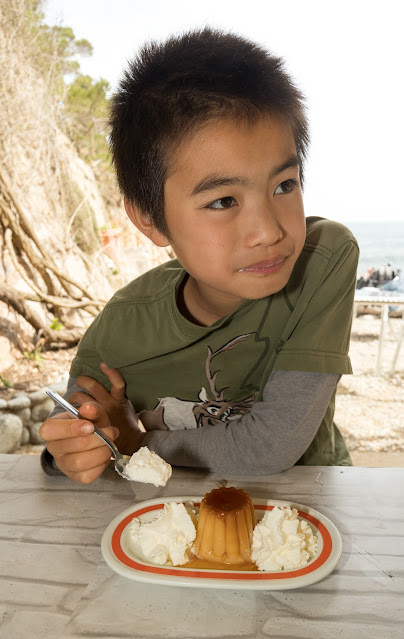Rationality is Steven Pinker's book about living in a post-truth era. He starts by giving an overview of logic and syllogisms, a rigorous, mathematical approach to determining the truth of statements. This is all well and good, and then notes that humans aren't really built to actually use those tools:
Another cause for gloom is that for all the talk of a replicability crisis, the myside bias is only too replicable. In The Bias That Divides Us, the psychologist Keith Stanovich finds it in every race, gender, cognitive style, education level, and IQ quantile, even among people who are too clever to fall for other cognitive biases like base-rate neglect and the gambler’s fallacy.31 The myside bias is not an across-the-board personality trait, but presses on whichever trigger or hot button is connected to the reasoner’s identity. Stanovich relates it to our political moment. We are not, he suggests, living in a “post-truth” society. The problem is that we are living in a myside society. The sides are the left and the right, and both sides believe in the truth but have incommensurable ideas of what the truth is. The bias has invaded more and more of our deliberations. (Kindle loc 4421)
He notes that in fact, as far as identity-signaling:
the best identity-signaling beliefs are often the most outlandish ones. Any fair-weather friend can say the world is round, but only a blood brother would say the world is flat, willingly incurring ridicule by outsiders.38 Unfortunately, what’s rational for each of us seeking acceptance in a clique is not so rational for all of us in a democracy seeking the best understanding of the world. Our problem is that we are trapped in a Tragedy of the Rationality Commons. (Kindle loc 4465)
There's an indictment of how science is taught in schools and museums:
Science is often presented in schools and museums as just another form of occult magic, with exotic creatures and colorful chemicals and eye-popping illusions. Foundational principles, such as that the universe has no goals related to human concerns, that all physical interactions are governed by a few fundamental forces, that living bodies are intricate molecular machines, and that the mind is the information-processing activity of the brain, are never articulated, perhaps because they would seem to insult religious and moral sensibilities. We should not be surprised that what people take away from science education is a syncretic mishmash, where gravity and electromagnetism coexist with psi, qi, karma, and crystal healing. (kindle loc 4589)
He points out that the kind of conspiracy theories that are popular are actually fairly accurate when it comes to the workplace:
The anthropologist Napoleon Chagnon writes that the Amazonian Yanomamö have the word nomohori, “dastardly trick,” for acts of treachery such as inviting neighbors to a feast and then massacring them on cue. Plots by enemy coalitions are unlike other hazards such as predators and lightning bolts because they deploy their ingenuity to penetrate the targets’ defenses and cover their own tracks. The only safeguard against this cloak-and-dagger subterfuge is to outthink them preemptively, which can lead to convoluted trains of conjecture and a refusal to take obvious facts at face value. In signal detection terms, the cost of missing a real conspiracy is higher than that of false-alarming to a suspected one. This calls for setting our bias toward the trigger-happy rather than the gun-shy end of the scale, adapting us to try to get wind of possible conspiracies even on tenuous evidence.57 Even today, conspiracies small and large really do exist. A group of employees may meet behind the back of an unpopular colleague to recommend that he be let go; a government or insurgency may plan a clandestine coup or invasion or sabotage. Conspiracy theories, like urban legends and fake news, find their way into rumors, and rumors are the stuff of conversation. Studies of rumors show that they tend to convey threats and dangers, and that they confer an aura of expertise on the spreader. And perhaps surprisingly, when they circulate among people with a vested interest in their content, such as within workplaces, they are usually correct.58 (kindle loc 4618)
What causes those same conspiracy theories to metasize is when they spread through networks of uninvolved people:
The problem is that social and mass media allow rumors to spread through networks of people who have no stake in their truth. They consume the rumors for entertainment and affirmation rather than self-protection, and they lack the interest and means to follow them up. For the same reasons, originators and spreaders suffer no reputational damage for being wrong. Without these veracity checks, social media rumors, unlike workplace rumors, are incorrect more often than correct. Mercier suggests that the best way to inhibit the spread of dubious news is to pressure the spreaders to act on it: to call the police, rather than leaving a one-star review. (kindle loc 4632)
This ought to send you into a deep depression, but Pinker is still optimistic, noting that this sort of irrationality has been with the human race since the dawn of time, but nevertheless we've managed to reduce infant mortality by getting rid of incorrect previous theories about infection and managed to eliminate slavery, grant women the right to vote, etc. Clearly, the book was written before the January 6th insurrection, but hey, Pinker's always been a Pollyanna, talking about how good life is today. In many ways he's right, but obviously I have little faith given how low our vaccine uptake is. Still, the book's well worth reading for the many insights and little pieces of data here and there in it.




























